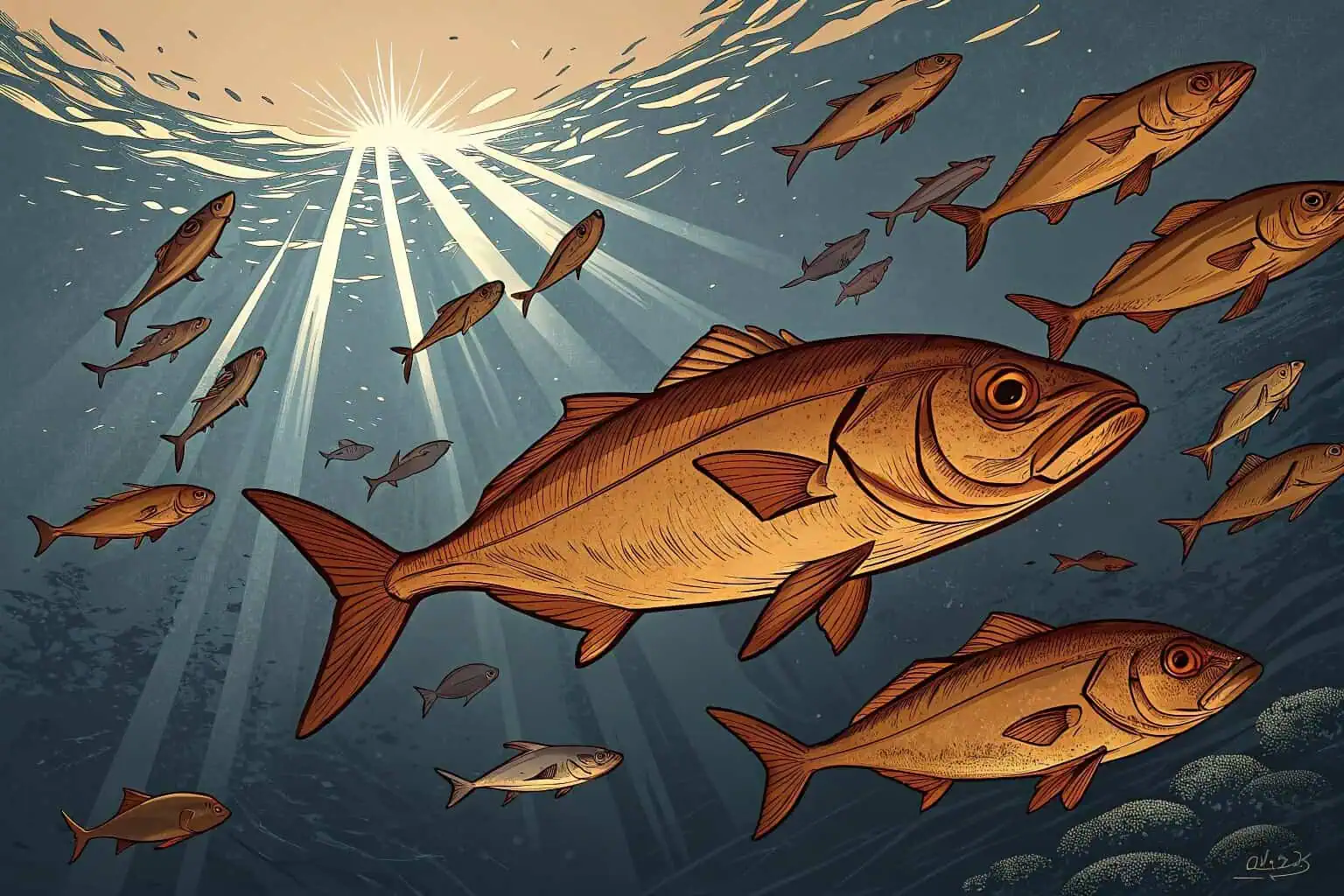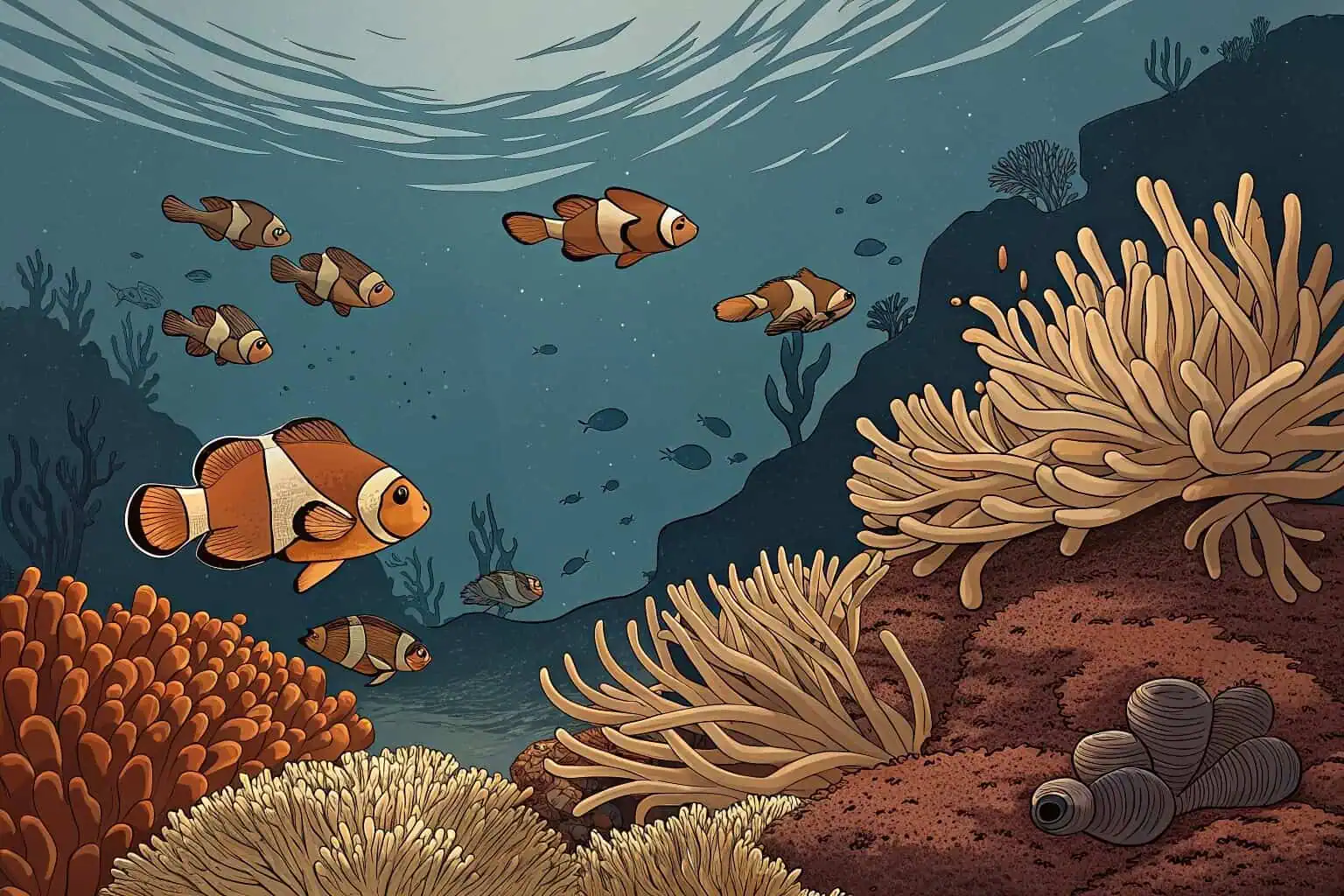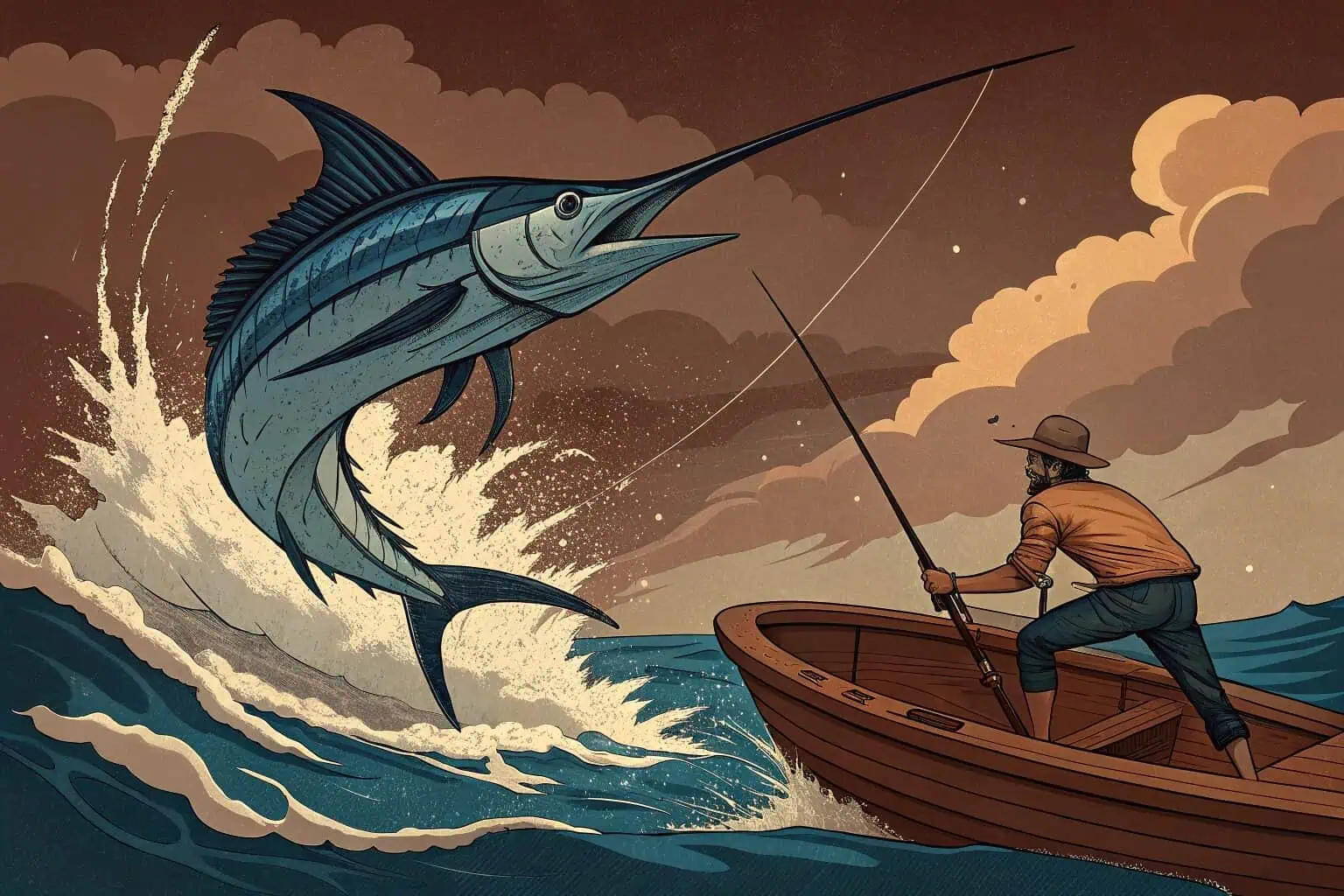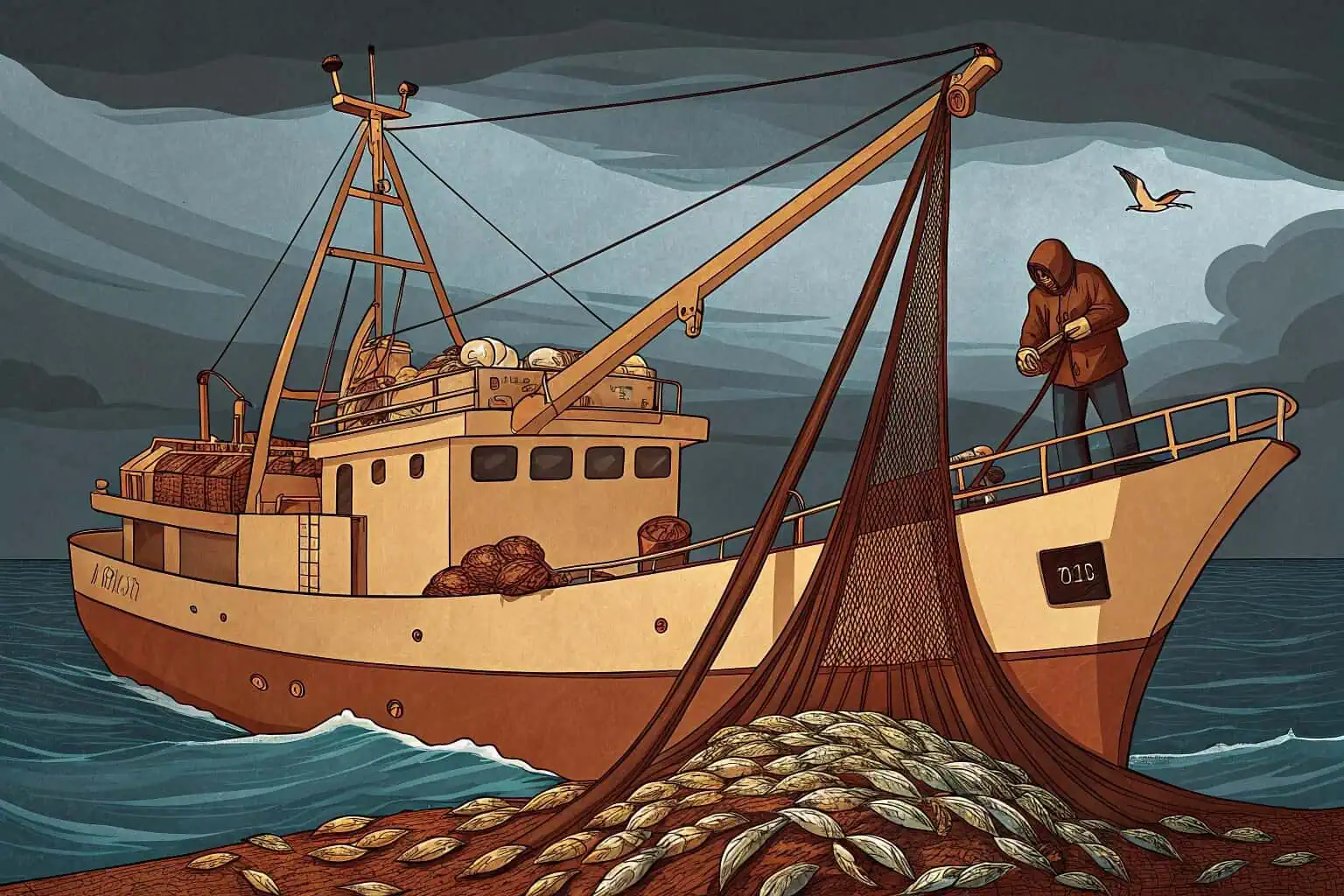What are some fish species that are impossible to farm?
Are you curious about the limits of fish farming? Many people think we can raise any fish, but the reality is much more complex. This misunderstanding puts our wild ocean populations at risk.
Simply put, fish with very specific needs for breeding, diet, or environment are nearly impossible to farm. This includes many deep-sea creatures, large ocean predators like sharks, and species with incredibly slow growth rates, making the process commercially unfeasible.

As someone deeply involved in the aquaculture industry, I've seen firsthand that it's a blend of science, technology, and careful management. It’s not as simple as putting fish in a tank. The challenges we face, from balancing environmental impact to managing resources, are significant. But the goal is clear: to provide food sustainably. Understanding which fish we can't farm helps us appreciate both the marvels of nature and the importance of protecting our wild fisheries. Let's explore the boundaries of aquaculture together.
What type of fish cannot be farmed?
Thinking about starting a fish farm? Choosing the right species is a critical first step. Picking a fish that's difficult or impossible to raise can lead to frustration and financial loss.
Fish that are not suitable for farming usually have complex reproductive cycles, highly specialized diets, or require unique environments that are difficult to replicate. This makes raising them in captivity impractical and often impossible from a commercial standpoint.

From my experience, the success of a farm hinges on choosing a species that thrives in a managed environment. We can't just pick any fish from the ocean and expect it to do well. Some species have evolved over millions of years for a life we simply cannot recreate. Trying to do so would be both unethical and unprofitable. This is where we need to be smart and work with nature1, not against it. Let's break down the main reasons why some fish just aren't cut out for farm life.
Complex Reproductive Needs
One of the biggest hurdles is getting fish to breed in captivity. Many species need very specific natural cues to spawn. For example, the European Eel undertakes an incredible migration across the Atlantic Ocean to the Sargasso Sea2 to reproduce. Recreating this epic journey and the unique conditions of the Sargasso Sea in a farm setting is, for now, beyond our technological reach. We can raise eels that are caught as juveniles, but we haven't closed their life cycle in captivity, meaning we still rely on wild populations.
Specialized Diets
Another major challenge is food. While many farmed fish like salmon or tilapia can be raised on specially formulated pellets, some species are much pickier eaters. Think of the beautiful Mandarin Dragonet from the aquarium trade. In the wild, it feeds on tiny live crustaceans found on live rock. Providing a sustainable and affordable supply of this live food on a commercial scale is incredibly difficult. This dietary specialization3 makes many ornamental fish, and some food fish, unsuitable for large-scale farming.
Extreme Environmental Requirements
Some fish are adapted to environments that are too extreme or vast to simulate. Bluefin Tuna are powerful, migratory predators that swim thousands of miles in the open ocean. While there has been some success in raising them in large sea pens, they require enormous amounts of space, and the process is very expensive. Deep-sea fish present an even greater challenge. An Anglerfish, for instance, lives in total darkness under immense water pressure. Building a facility that could replicate these conditions would be a monumental feat of engineering, making it completely impractical for farming.
| Challenge Category | Description | Example Species |
|---|---|---|
| Reproductive Complexity4 | Requires specific, hard-to-replicate environmental triggers for spawning. | European Eel |
| Specialized Diet5 | Feeds on live or very specific prey not easily sourced for farms. | Mandarin Dragonet |
| Extreme Environment6 | Needs conditions like deep-sea pressure or vast migratory routes. | Bluefin Tuna, Anglerfish |
What is the most impossible fish to catch?
Have you ever wondered what the ultimate fishing challenge is? Some fish are so powerful or elusive that they have become legends. They push anglers and their gear to the absolute limit.
While it's a matter of opinion, many anglers would say the Giant Trevally (GT) is the most impossible fish to land due to its sheer power. Others might point to the elusive Blue Marlin for its intelligence and acrobatic fights. These traits also make them impossible to farm.

The very characteristics that make a fish a legendary catch7 often make it a poor candidate for aquaculture. Their wildness, their need for space, and their aggressive nature are things we celebrate in sport fishing but cannot contain on a farm. It's a great reminder of the raw, untamable power of the ocean. These fish are symbols of what we should strive to protect in its natural habitat, as they represent a part of the wild that we simply cannot replicate.
The Brute Force Challenge: Giant Trevally (GT)
The Giant Trevally is known for its brutal, unstoppable initial run after taking a bait. They are pure muscle and aggression, often breaking lines, straightening hooks, and even breaking rods. I've heard stories from fishermen who were physically pulled off their feet by a large GT. This raw power and predatory instinct are perfect for the wild coral reefs they inhabit, but in a contained farm environment8, this aggression would lead to constant stress, injury, and chaos. They are simply too wild to be farmed.
The Elusive Speedster: Blue Marlin
The Blue Marlin is the ultimate prize for many big-game anglers. They are incredibly fast, highly intelligent, and famous for their spectacular aerial displays when hooked. They are also pelagic, meaning they live in the open ocean and migrate for thousands of miles. Their lifestyle is built around vast, open spaces. Confining a creature like this to a sea pen would be cruel and impossible. Their need for the open ocean is absolute, placing them firmly in the category of unfarmable fish9.
The Living Fossil: Coelacanth
From a purely scientific perspective, the Coelacanth stands out as arguably the most challenging fish to catch alive and maintain in a healthy state. This incredibly ancient fish, believed to have been extinct for a staggering 65 million years before its dramatic rediscovery, resides in the deep, dark reaches of the ocean in cave systems. Its intricate biology remains largely enigmatic, and the drastic shifts in pressure and temperature experienced during ascent from its deep-water habitat to the surface are almost invariably fatal. Its extreme rarity and the specialized, inaccessible nature of its habitat render it a species that scientists can primarily study from afar. The notion of catching Coelacanths for farming purposes is, consequently, entirely inconceivable and scientifically unfeasible.
| Characteristic | Description | Implication for Capture and Farming |
|---|---|---|
| Ancient Lineage10 | Thought to be extinct for 65 million years before rediscovery | Indicates a highly specialized and potentially fragile biology |
| Habitat | Lives in deep-sea caves | Difficult to access; extreme pressure and temperature conditions |
| Biology | Largely a mystery | Limited understanding of its needs for survival outside its habitat |
| Pressure & Temperature Sensitivity11 | Extreme pressure and temperature changes upon surfacing are usually fatal | Cannot survive the journey from its deep-water habitat to the surface |
| Rarity | Very rare | Limited population makes any capture attempt ethically problematic |
| Farming Potential12 | Completely out of the question | Biologically and logistically impossible due to habitat and fragility |
What are the 5 most overfished fish?
The seafood we love is putting a huge strain on our oceans. The high demand for certain species has pushed many to the brink of collapse. This is a problem that affects everyone.
Among the most critically overfished species are the Atlantic Bluefin Tuna, Atlantic Cod, Orange Roughy, Chilean Sea Bass, and many shark species. High demand and destructive fishing have decimated their populations, creating an urgent need for sustainable solutions.

This issue is the primary reason I believe so strongly in responsible aquaculture. When wild stocks are collapsing, farming provides a vital alternative to meet global demand. However, it's not a simple replacement. As we've seen, we can't farm all of these overfished species easily, if at all. This highlights a two-part solution: we must perfect the aquaculture of species we can farm, and we must implement and enforce strict protections for the wild species13 we can't.
Atlantic Bluefin Tuna
Valued for its fatty meat, especially in the sushi market, the Bluefin Tuna has been fished to dangerously low levels. Their slow growth and late maturity make them particularly vulnerable to overfishing. As I mentioned, farming them is incredibly difficult and expensive14. While some progress has been made, most "farmed" tuna are actually wild-caught juveniles that are then fattened in pens, which still puts pressure on wild populations.
Atlantic Cod
The collapse of the Atlantic cod fishery15 off Newfoundland in the 1990s is a classic cautionary tale. For centuries, it seemed like an endless resource, until it wasn't. This disaster was a wake-up call for the entire world. Since then, there have been efforts to farm cod, and while it is now commercially established, it has faced challenges with disease and profitability, showing that even for a seemingly straightforward fish, aquaculture is complex.
Orange Roughy
This deep-sea fish is a prime example of an unsustainable choice. The Orange Roughy can live to be over 150 years old and doesn't reproduce until it's around 30. The fish you see in the market are likely older than you are. This life cycle makes them extremely vulnerable to overfishing, and they have no potential for commercial aquaculture16 because of their incredibly slow growth.
| Species | Key Reason for Overfishing | Aquaculture Status |
|---|---|---|
| Atlantic Bluefin Tuna | High market value, slow maturation | Experimental, challenging, high cost |
| Atlantic Cod | Historical over-exploitation | Established, but with challenges |
| Orange Roughy17 | Very slow growth, late maturity | Not commercially viable |
| Chilean Sea Bass | High demand, illegal fishing | Not commercially viable |
| Sharks | Finning, slow reproduction | Not farmed for food |
What is the most rare species of fish?
The ocean is full of mysteries, and some of its inhabitants are so rare they have been seen only a few times. These creatures exist on the very edge of our understanding.
The Devils Hole Pupfish is arguably the rarest fish, with its entire population living in a single, small cavern in Nevada. Another contender is the Coelacanth, a living fossil from the time of dinosaurs. Their extreme rarity makes farming them both impossible and unthinkable.

This is where aquaculture's purpose can shift from food production to conservation. As my insights suggest, we can use aquaculture techniques to help save endangered species. For a fish like the Devils Hole Pupfish, captive breeding programs are a last line of defense against extinction. It's a different kind of farming, one driven by preservation, not profit, and it shows the incredible potential of this industry to do good for the planet.
The Confined Rarity: Devils Hole Pupfish
This tiny fish has one of the smallest natural habitats of any animal on Earth: a single limestone cavern in Death Valley. The entire species' population can fluctuate between 100 and 200 individuals. They are critically endangered, and their fate is tied to this one fragile location. Scientists have created a refuge facility that replicates the pupfish's habitat to establish a backup population. This is a perfect example of using aquaculture principles for conservation18, a direct effort to prevent a species from vanishing forever.
The Prehistoric Ghost: Coelacanth
As we've discussed, the Coelacanth is a true living fossil. Finding one is a major scientific event. They live in deep, dark waters and have a slow, low-energy lifestyle. We know very little about how they reproduce or how long they live. Their rarity and mysterious nature mean our only priority is to study and protect them in their natural environment. They represent a window into our planet's distant past, and the idea of farming them is simply not on the table.
The Unseen Wonders: Psychedelic Frogfish & Others
Beyond the more widely known rare species, the ocean holds fish known from only a mere handful of specimens, such as the Psychedelic Frogfish, which uniquely navigates the seafloor by bouncing, or the Goblin Shark, characterized by its truly bizarre, extendable jaw. These remarkable creatures serve as a powerful reminder of the vast extent of the ocean that remains unexplored. The fundamental truth is that we cannot cultivate or farm what we do not comprehend. They stand as a powerful testament to the astonishing diversity of life in the marine realm and a humbling reminder of our responsibility to be careful stewards of an ocean whose profound secrets we are only just beginning to unveil.
| Example Fish | Notable Characteristic | Status of Knowledge | Implication for Farming |
|---|---|---|---|
| Psychedelic Frogfish19 | Bounces along the seafloor | Known from only a handful of specimens | Limited understanding of biology and habitat |
| Goblin Shark20 | Bizarre, extendable jaw | Known from only a handful of specimens | Limited understanding of biology and habitat |
| Overall Significance | Remind us of unexplored ocean | Much of the ocean is still unknown | Cannot farm what we do not understand |
| Lesson Learned | Testament to incredible diversity | Need to be careful stewards | Humbling reminder of ocean's secrets |
Conclusion
Aquaculture is a vital tool for our future, but it has limits. Many fish cannot be farmed, which means we must protect wild populations and manage our oceans wisely for generations to come.
-
Learning about sustainable practices in aquaculture can enhance farm success and promote environmental harmony. ↩
-
Discover the ecological significance of the Sargasso Sea and its role in the life cycle of various fish species, including the European Eel. ↩
-
Learning about dietary specialization can provide insights into the complexities of aquaculture and species suitability. ↩
-
Understanding these triggers can help in conservation efforts and aquaculture practices. ↩
-
Learning about its diet can aid in better care and breeding in captivity. ↩
-
Exploring their adaptations can provide insights into marine biology and conservation strategies. ↩
-
Explore the unique traits that define legendary catches and their significance in sport fishing, enhancing your understanding of angling. ↩
-
Learn about the difficulties and implications of farming wild fish species, which can lead to stress and injury in fish like the Giant Trevally. ↩
-
Discover why some fish, like the Blue Marlin, are considered unfarmable and the implications for conservation and fishing practices. ↩
-
Understanding ancient lineages helps in conservation efforts and reveals insights into evolutionary biology. ↩
-
Exploring this topic can provide valuable insights into the adaptations of deep-sea life and their survival mechanisms. ↩
-
This resource will clarify the biological and logistical challenges of farming deep-sea organisms, enhancing your understanding of marine biology. ↩
-
Learn about effective strategies for wildlife protection that can help preserve biodiversity and ensure sustainable ecosystems.] ↩
-
Discover the challenges and costs associated with farming Bluefin Tuna, shedding light on the complexities of aquaculture. ↩
-
Explore the history and impact of the Atlantic cod fishery collapse to understand its significance in marine conservation. ↩
-
Discover the challenges and advancements in commercial aquaculture for deep-sea species like Orange Roughy. ↩
-
Explore the sustainability challenges of Orange Roughy to understand the impact of overfishing on marine ecosystems. ↩
-
Exploring how aquaculture principles aid conservation can provide insights into innovative methods for protecting endangered species. ↩
-
Explore the unique adaptations and ecological role of the Psychedelic Frogfish, a fascinating species with limited specimens known. ↩
-
Discover the Goblin Shark's bizarre jaw and its implications for understanding deep-sea ecosystems. ↩